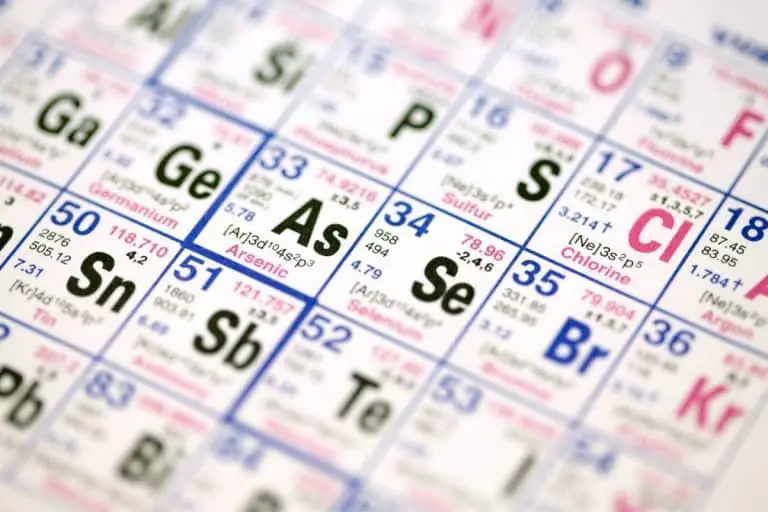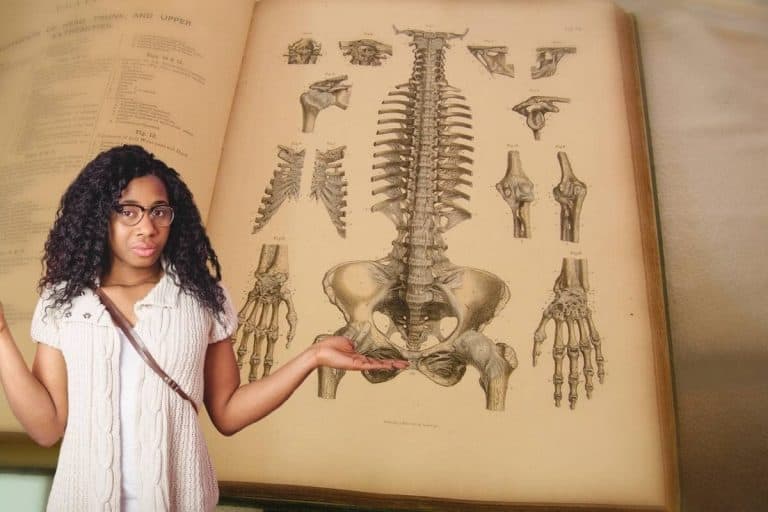Can I Take Geometry Before Algebra 1? Key Considerations
For students entering high school, they will most likely need three or four math credits to graduate. Usually, classes can range from algebra, geometry, statistics, and more advanced levels of math such as calculus. However, is it wise to take geometry before algebra 1?
If your school allows you to, you could take Geometry before Algebra 1. However, there are other variations, such as taking Algebra 1 before Geometry or taking Algebra 1 & 2 before Geometry.
The rest of this article will elaborate on these variations and some tips on becoming better at Algebra and Geometry. Let’s get started.
Algebra vs. Geometry: What Is the Difference?
Before figuring out whether you might prefer to take algebra or geometry first, you might want to recognize the difference between the two disciplines.
Algebra is a type of mathematics that focuses on expressions and unknown variables that could relate to real scenarios, while geometry studies sizes, shapes, and angles. Algebra is used for complex equations, while Geometry is used for architectural processes.

The following sections will describe in detail these differences.
Algebra
If students take algebra, they are likely already familiar with the subject because of taking pre-algebra in late middle school.
Algebra, whether pre-algebra or Algebra 1 or 2, is the study of expressions and variables. Students often try to uncover a missing variable and learn many different topics like y=mx+b, inequalities, graphing lines, and functions.
Geometry
Geometry is sometimes perceived to be a more straightforward subject.
It mainly studies shapes, sizes, and angles, and many of geometry’s math problems center around finding the shape’s area or surface area and often reflect real-world situations.
Students generally need to memorize a lot of formulas and have to practice repetition within their classes. Formulas might include finding the area, perimeter, length, width, and height of the shape, as well as the different formulas for each shape.
Students also learn theorems.
Which Is Easier?
Students are different, and it is not surprising that most of them might find one subject more accessible or more complex than the other.
Students who enjoy equations and logically finding variables might find algebra easier, while visual learners with fantastic memory might find geometry easier. Algebra is mainly composed of equations and variables and requires that the student know how to solve expressions.
However, geometry relies on the student memorizing formulas and using introductory algebra to solve specific formulas and theorems.
Sources: SoFlo Tutors, SplashLearn, and Burlington County Times
Math Sequences
Every high school follows some variation of a math sequence. Typically the arrangement for algebra and geometry is as follows:
- Algebra 1
- Geometry
- Algebra 2
The following sections will discuss the possible sequences and some reasons as to why some schools may choose to apply them.
Sequence #1: Algebra 1, Geometry, Algebra 2
Schools will often schedule freshmen into Algebra 1 as they likely took pre-algebra in 8th grade. They most likely do this to keep the students’ algebra skills sharp after a long summer break. It also makes sense for the student’s math progression if they had taken pre-algebra already.
Most schools use this sequence.
Additionally, schools let their students take geometry before Algebra 2 because it uses many formulas that a student should have previously learned in geometry. If students learn geometric formulas before Algebra 2, they will likely have an easier time keeping up with the pace instead of struggling with the formulas.
Geometry also, at times, uses algebra, so it might be wise to learn plenty of algebra before taking geometry. An example of a geometry problem that uses algebra is the Pythagorean Theorem, where students solve the missing variable for a triangle with a side that is slanted.
Sequence # 2: Algebra 1, Algebra 2, Geometry
This sequence follows a simple pattern and seems to be a more linear progression.
When students enter high school, they have already taken pre-algebra and can now take Algebra 1. Students can then take Algebra 2, then move directly into Geometry. This kind of math sequence has its advantages and downsides.
This sequence might be ideal for students who want to focus on one subject, specifically algebra, at a time. It makes sense to go from pre-algebra to Algebra 1 and then 2. It also helps students hone their algebraic skills before tackling the subject of geometry.
Unfortunately, there are some disadvantages to this.
Because Algebra 2 demands that students use formulas that they should have learned in geometry, it can become easy to feel a little lost in Algebra 2. Students might need to depend on their teachers to teach geometry concepts or teach themselves.
Furthermore, it might be a bit of a jump for students to go entirely from algebra to geometry.
Not as many schools use this sequence as much as Algebra 1, geometry, & Algebra 2. However, this sequence might be best for students wanting to improve their skills in algebra before tackling a new subject like geometry.
Sequence #3: Geometry, Algebra 1, Algebra 2
Like the previous sequence, some schools like to have freshmen jump right into geometry before learning algebra. With geometry, students learn about shapes, sizes, and angles while also applying some algebraic skills that they should have obtained in pre-algebra.
Afterward, students begin going deeper into algebra and use what they have learned in Algebra 2.
Again, this sequence works for students who want a simple progression and focus on a single subject at a time. It is also a good option if students want to prepare for SAT or ACT exams, including a significant amount of geometry in their math sections.
However, this sequence also has its downsides.
It will feel strange for students to finish pre-algebra and go onto geometry, only to return to algebra again the following year. The usage of algebraic skills in geometry is present but still minimal.
The lack of practice in algebraic skills might hinder students when it is time to take Algebra 1.
Besides that, taking geometry first and then Algebra 2 after a significant amount of time has passed might make students struggle when it is time to remember geometric concepts. It also might not be beneficial for students who take pre-algebra and then have to disrupt this pattern to learn geometry and go back to algebra.
The sequence seems a bit of a stretch and can be confusing for students to follow along.
While this sequence is uncommon, it could be an advantage for students who want to focus on geometry first and follow a simple progression towards algebra. It is also great for students wishing early practice for their SAT and ACTs.
However, schools and students must be aware of these possible downsides.
Sources: The Home Scholar and Prepscholar
Tips for Becoming Better at Math
Math is often a complex subject for many students. There are many numbers, equations, formulas, and steps to memorize to be able to solve problems. However, all hope is not lost.
Let’s look at some tips you can follow to improve math skills and enhance studying.
Do the Homework
Though homework can be tedious and feel like a chore for students, math homework is one of the best ways to practice at home.
Most math homework is just a review of what the lesson was in class, letting students evaluate how much they understood the lesson. It is also an excellent opportunity to enlist help from tutors or teachers when students have a problem.
When doing homework, students should carefully solve the problems and mark the ones they have questions on or had a difficult time with solving. Students should also pay attention to concepts they especially struggle to work through and ask their teacher or tutors for extra assistance.
Talk to Teachers and Tutors
Teachers and tutors are excellent resources when it comes to problems or questions. Tutors are instrumental outside of class time, and students can hire them to come over and help with homework or studying. In some cases, schools have tutors who can help free of charge.
Always Ask Questions During Class
It is okay for students to ask questions when they don’t understand a concept in class. It is also beneficial to ask questions because other students might have the same question but are shy about asking.
If a student is too nervous to ask in front of the class or doesn’t believe it is time to answer, they can write down their question and ask their teacher after class or through email.
Attend Class As Much as Possible
It can be tempting for students to want to miss school once in a while or even skip their course, but doing this will only hinder their learning and prevent them from succeeding in math. Students should make an effort to be in class and pay attention, take notes, ask questions, and do their classwork.
Doing all of these things will help the student improve their math skills significantly.
Review days can be an especially tempting day to skip class or school. However, review days are also the most crucial. Students should always make an effort to attend review days so that they can ask questions, try to improve on concepts that they haven’t mastered, and continue practicing their math skills.
Students Should Review Mistakes and Errors
Depending on the teacher, students can review homework problems in class or receive graded tests. When given these opportunities, students should use these to their advantage and look over what they got wrong and how they can correct their mistakes for later. Students can even look at the error and re-work the problem using the correct method.
Work With a Study Partner
High school students will likely have friends that share the same class period with them. If students trust their friends and know that a specific friend is skilled in math, they can reach out to that person for help or form a study group.
Study groups or study partners can be an excellent way to improve students’ skills and review other people’s work.
Study groups are especially helpful for all students involved. Students can help each other and improve their strengths and weaknesses in different math concepts.
Learn How To Operate a Calculator
Calculators are all different and have different ways to use them. When purchasing calculators for class, students should read their syllabus carefully to understand the required calculator for the course and know how to use it.
One of the best calculators that students like to use is the Texas Instruments TI-30XIIS Scientific Calculator, (link to Amazon), which is battery-powered and is one of the most robust scientific calculators on the market.
Students should ask their teachers whether they need a scientific or graphing calculator for the class.
Take Good Notes During Class
Taking notes for math is tricky as math notes typically consist of numbers and equations rather than words. A great trick to writing down notes for math is to write out each step and use a different color as the problem is solved.
Writing out problems step-by-step and using a bright, new color can help students understand what to do and review how to solve the problem.
Pretend To Teach a Class
This strategy is perfect for reviewing for tests and exams. Students can pretend to introduce the concept out loud to an invisible audience and evaluate the accuracy and flow of the lecture when they are finished.
Solving problems aloud can also be a great way to help students memorize how to solve specific math problems.
Create Review Sheets or Practice Tests
If teachers do not provide review sheets or practice tests for their students, students can create their own. A way to do this is to pick random questions from their previous homework or their textbook and put them in a document that they can print out. There might also be sites that students can access to generate questions or print out a review sheet from the internet.
Source: Education.com and Grade Power Learning
Conclusion
Students might be able to take geometry before algebra 1, depending on their school. However, students should keep in mind the benefits and disadvantages of the various sequences. No matter what sequence a student’s school follows, students can still succeed in their math courses by attending class, studying outside of class, and getting help when needed.







